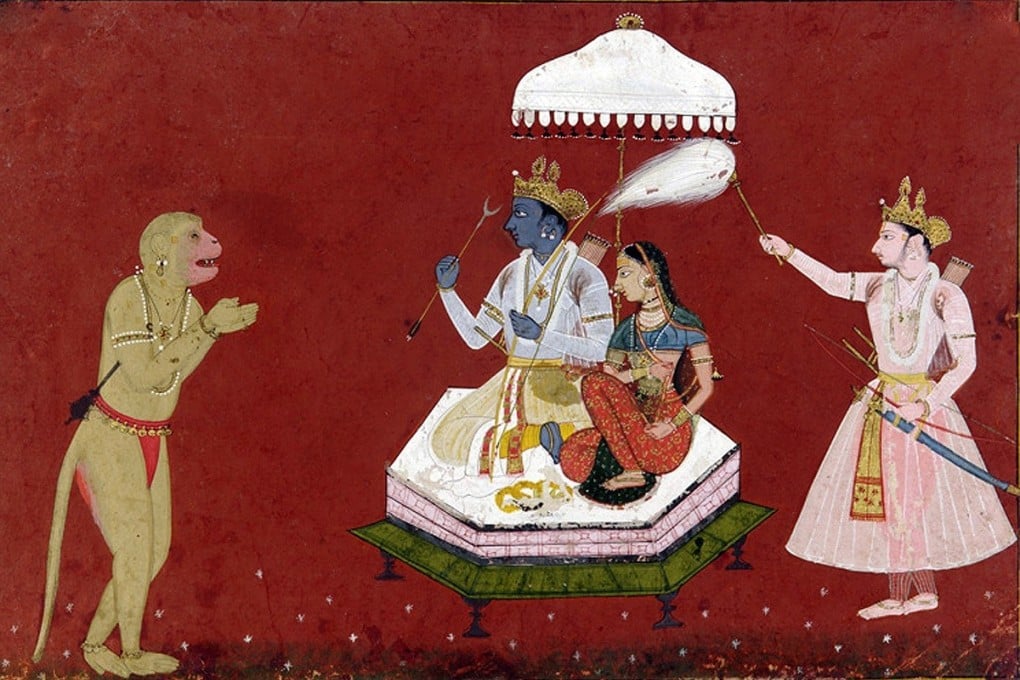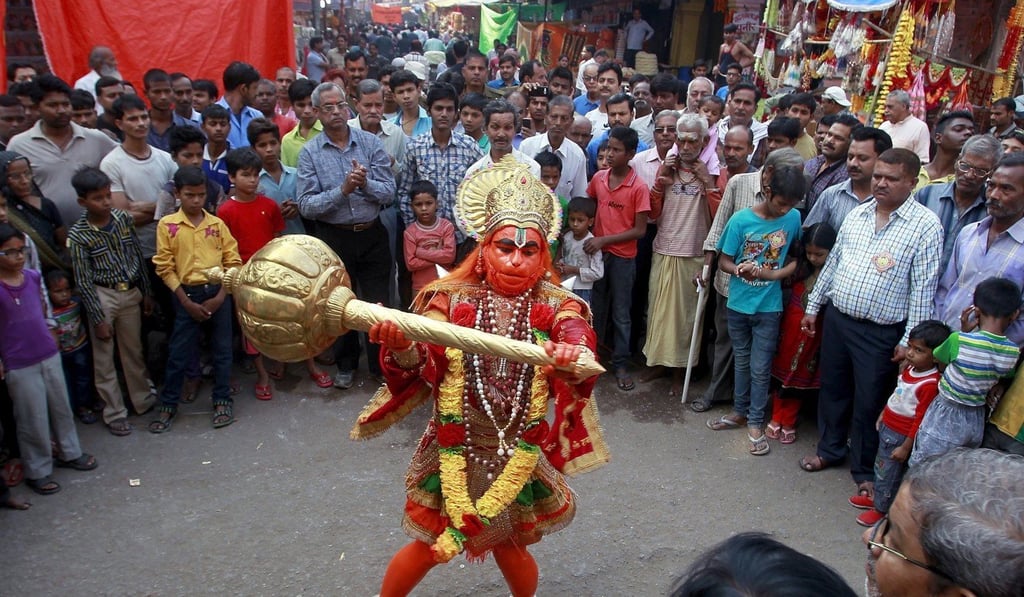Is the Hindu monkey god Hanuman really Homo erectus?
- A new book by an Indian scholar contends that the monkey god Hanuman belonged to an extinct human species
- The author’s examination of the Hindu epic Ramayana found that Hanuman and his companions inhabited ‘a distinctive’ human culture

From elephant-faced to lion-headed to horse-necked, the Hindu pantheon is brimming with a variety of gods fulfilling the spiritual needs of millions of believers. Yet no deity is more popular in India, perhaps, than the ape-faced Hanuman, the country’s ever-present monkey god.
But the perception that Hanuman is indeed a monkey could now radically change, with a novel theory in a newly published book suggesting that Hanuman and other “Vanaras” – Hanuman’s other monkey-like companions – of the Indian epic Ramayana could belong to the extinct human species Homo erectus or perhaps even the “Hobbit” species Homo Floresiensis, rather than being merely monkey.
The Ramayana was originally penned by Valmiki in Sanskrit, and there have been several adaptations and retellings in all the Indian regional languages. It is the tale of Lord Rama, an ancient king Hindus believe to be an ideal human, and how he rescues his abducted wife with the help of an army of forest-dwelling “Vanaras”.
In the vast body of Hindu literature filled with creative myths and moral fables, the Ramayana is widely accepted as a historical occurrence, though some specifics are disputed.

“If one reads the original Ramayana without the influence of succeeding vernacular versions, which emerged at least several centuries after Valmiki, Vanaras like Hanuman are referred to as a distinct species altogether,” said the author of the new book, Dr Rangan Ramakrishnan, a scholar of the Ramayana and literary historian. “Like other human species, they speak fluently and they inhabit a distinctive culture.”